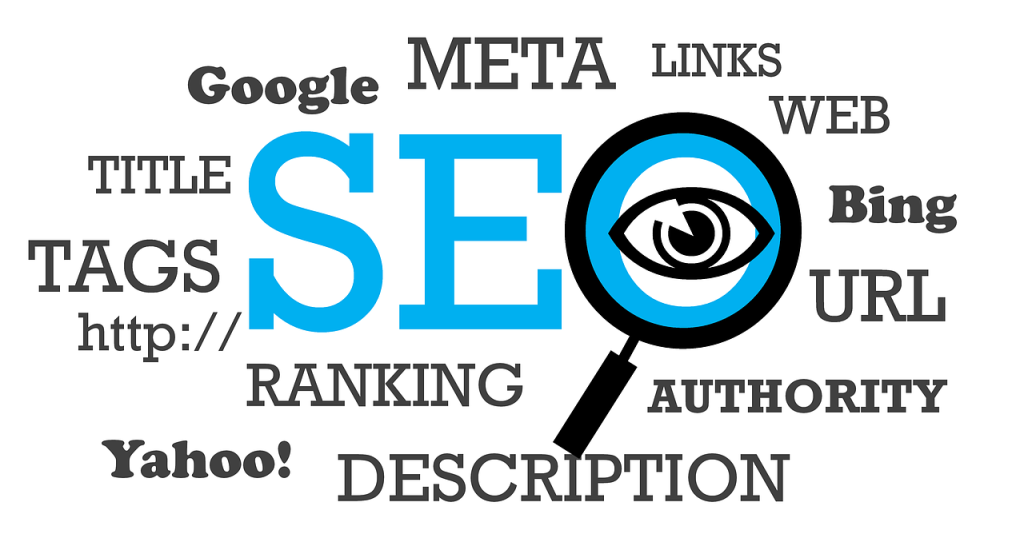Attracting more organic traffic to an e-commerce website is at the top of the mind of every modern entrepreneur. However, one question remains: “How do you get more traffic to your store without having to spend big on marketing or online ads?” The answer: By learning how to make use of the power of e-commerce SEO.
E-commerce SEO refers to the practice of fine-tuning your e-commerce store to meet search engine best practices. This includes updating all your web content on an ongoing basis to make sure it reflects what your target customers are looking for.
The benefits of e-commerce SEO are many and include increased visitors, sales, and better brand awareness. However, given the constant updates in search engine algorithms, knowing how to approach SEO can prove a bit challenging. Below is a detailed look at the SEO best practices for e-commerce websites!

Keyword research: finding the right terms for your products
If there’s one thing every e-commerce website owner should learn, it’s how to perform in-depth keyword research. For instance, if you target market is Spain, The goal of your Spain SEO strategy should be twofold:
- Identify popular keywords for your niche
- Understand the search or user intent
There are several ways to do this, as shown below.
Using Google tools
Don’t have a budget for professional keyword research? Worry not! Google Search Console and Google Keyword Planner can help you get started. The Keyword Planner allows you to find search estimates, new keywords, and checkout how much it will cost you to target them.
It also comes in handy when organizing keywords or when kickstarting new campaigns. Using Google Search Console, you can easily locate low-hanging fruit keywords. These are keywords that have low competition and high SEO value.
Optimizing product pages for search engines
You can employ on-page optimization techniques to help you attract and acquire new customers. These optimization techniques are crucial to gaining more conversions, translating to an improved bottom line. Not sure how to do it? The team at Seeders can guide you on where to focus your efforts.
Ordinarily, these areas include:
- Product descriptions
- Reviews
- Images
Product descriptions
Before you begin optimizing your store’s product descriptions, start by asking yourself three questions:
- Which are the most important elements on this page?
- What can you do to maximize their visibility and impact?
- How can you use these details to boost the efficiency of the product descriptions?
To optimize the product descriptions, consider the following:
- Including testimonials
- Adding CTAs
- Including keywords
Reviews
User reviews are vital for the success of your e-commerce store. They’re there to help consumers decide whether to do business with your store. Reviews also help you improve conversion rates while building trust with potential consumers.
You should encourage customers to leave reviews every time they make a purchase on your site. They can do this by sending automated messages.
Photos and images
Product photos and images can make your web pages look more interesting and engaging. However, if used incorrectly, they can also prove to be too distracting. The trick, therefore, is to make sure you don’t use too many of them in your product descriptions.
By optimizing your photos for SEO, you’re likely to rank higher in Google, attracting more traffic to the store. This can also help bring in traffic from Facebook, X, and Instagram.
The importance of user experience in SEO

The integration between search engine optimization and user experience is crucial in the digital strategy of any e-commerce website.
These two are complementary and reinforce one another to provide an optimal experience for both search engines and web users. Their integration can positively impact the visibility and performance of a website, as shown below.
Improving user experience
Integrating SEO and user experience helps improve the overall user experience. When an e-commerce store is optimized for Google, visitors can easily find the information they need. This significantly increases user satisfaction thus translating to higher user retention.
Increasing visibility and store traffic
Increased visibility and web traffic are other benefits linked to integrating user experience and SEO. By optimizing the structure and content of your e-commerce site, its positioning in search engine results tends to improve significantly.
As a result, more people will see your online store in search results, which will lead to an increase in the site’s organic traffic.
Leveraging customer reviews for SEO benefits
Customer reviews hold significant SEO value for your e-commerce store for a number of reasons. For starters, they help generate fresh content for the website. Google favors frequently updated content as it indicates that a site is indeed active.
Secondly, reviews often include keywords that potential customers might use when in search of a product. Whenever a customer is describing their experiences, they often use specific phrases and terms that might appear in a search query. This type of keyword diversification helps improve visibility.
Finally, positive customer reviews can build your store’s credibility and trustworthiness. The goal of search engines is to provide users with high-quality and reliable results. Customer reviews provide social proof that the e-commerce website delivers on its promises.
Monitoring and analyzing your SEO performance
SEO monitoring is where an e-commerce website owner consistently observes their campaign efforts. Its goal is to provide you with a detailed understanding of the metrics that matter the most to the success of your search engine optimization strategy. Some of the key SEO metrics you can track include:
Traffic flow
The first thing you need to do is track your level of visibility in search engine results. Here, the amount of organic traffic the site is receiving from its current ranking is an indication of the type of impact that your SEO strategy has had on users.
Bounce rate
It measures the number of visitors who leave your online store after visiting a single webpage. You’ll want to make sure that the site has a low bounce rate if you hope to increase your conversion numbers. Consider performing an SEO audit to determine the factors that are contributing to a high bounce rate.



